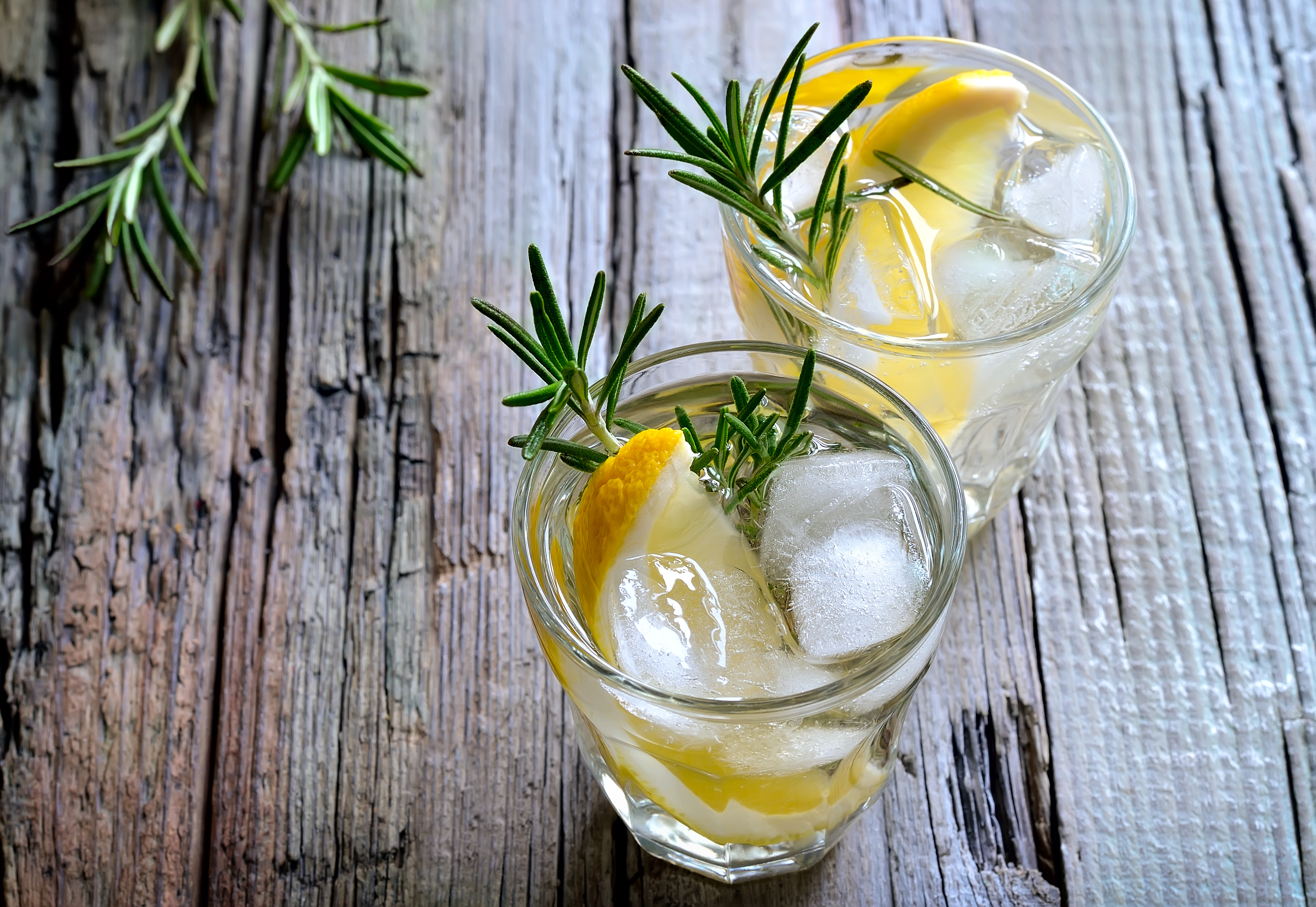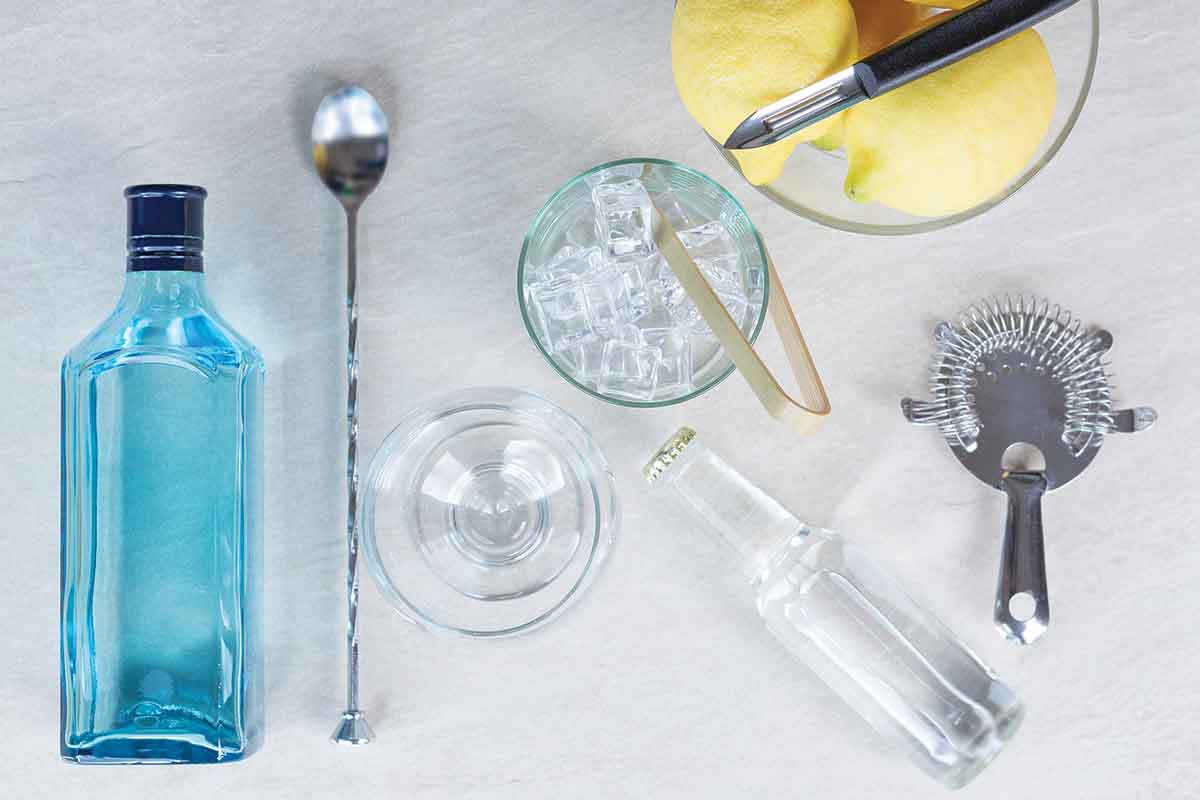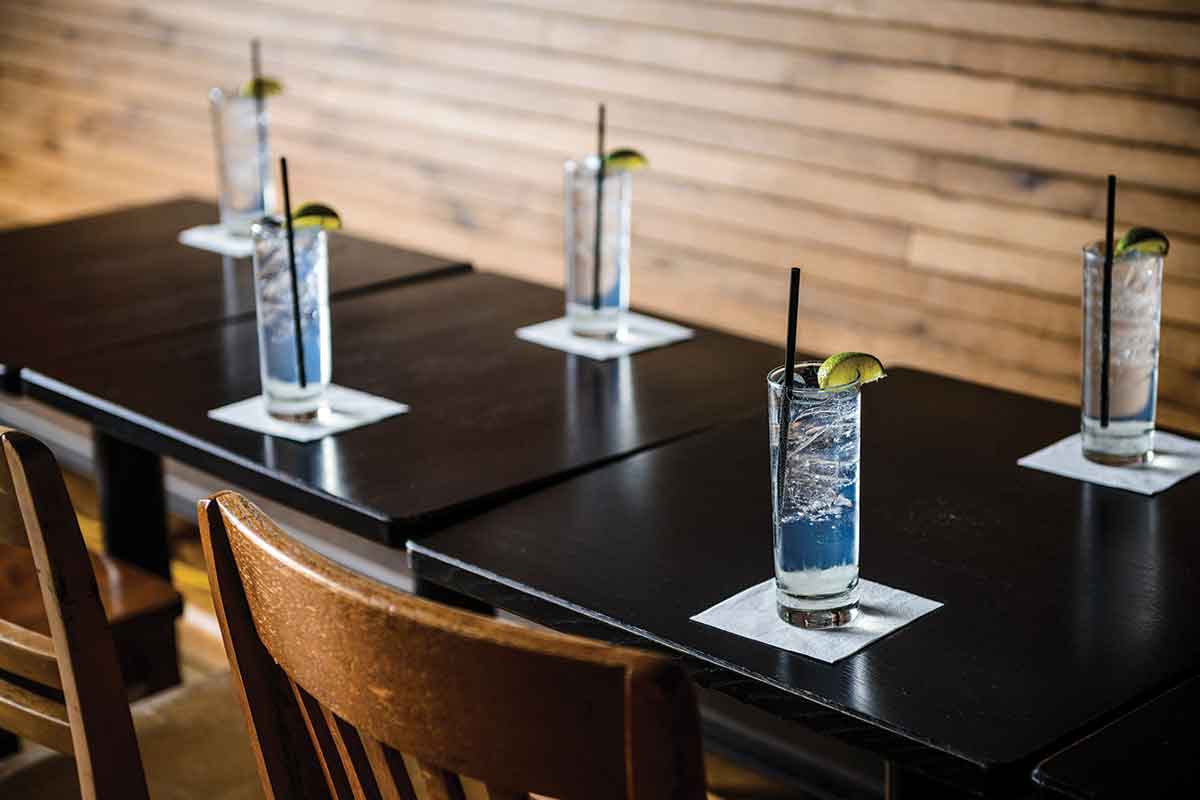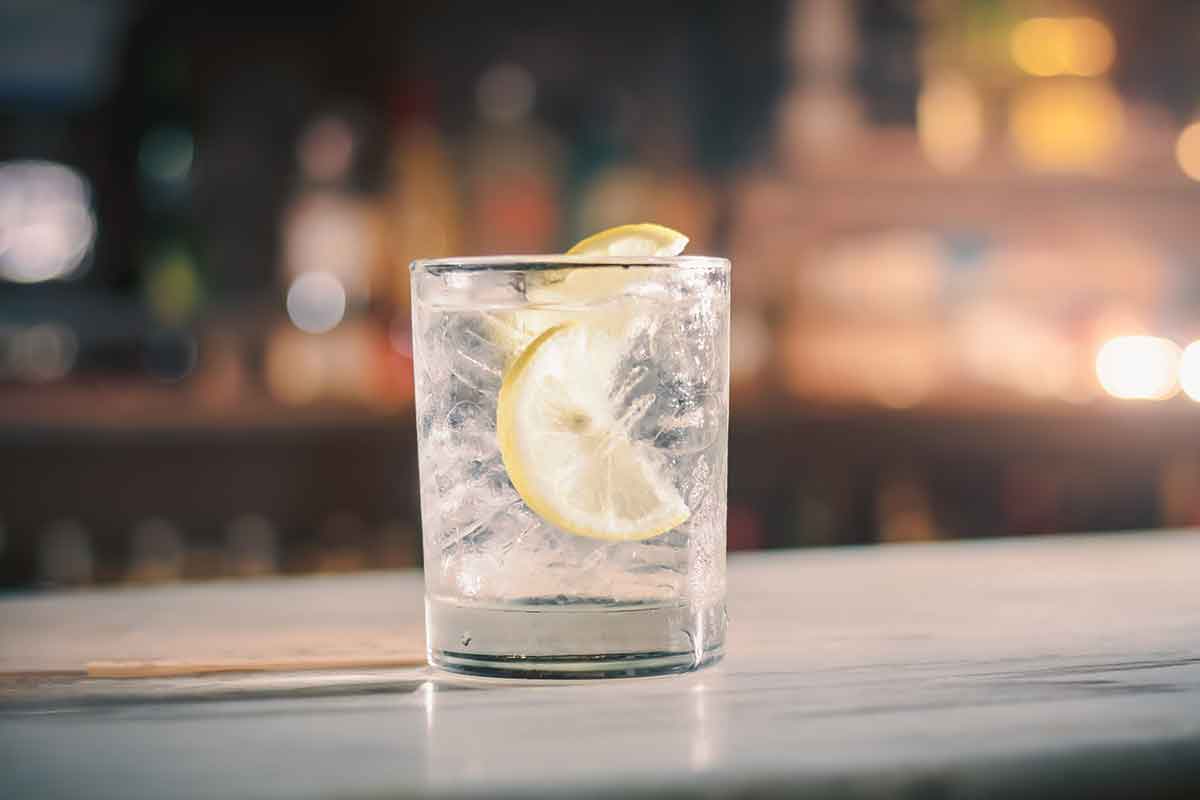A Gin & Tonic was my go-to order at the beginning of this century. Actually, it was a Sapphire and Tonic and while I was certain about my gin choice (yes, it was the bottle color that drew me in!), I gave little thought to what was coming out of that soda gun. These days, I do consider it. Perhaps a little too much for some tastes, but never-mind those folks. These days, there are so many gins on the market, and the tonic choices are multiplying as well. We thought it a good idea to taste through some of them to find out how they differ.
A Brief History Lesson
How did we come to drink gin & tonics anyway? We can give the credit to the British Armed Forces in this regard. Remedies to combat certain aliments created combinations which helped dictate how we drink gin to this day. Ailments ranging from seasickness (Pink Gin), scurvy (Gimlet), and malaria (Gin & Tonic) all had to be treated. And gin certainly helps the medicine go down.
As for the tonic, it was created as a way to consume the bitter quinine. Quinine (in the form of the bark from the cinchona tree) was discovered in the Andes of Peru and found to contain a remedy for malaria. A little sugar, a little water, add a little citrus for good measure (and later carbonation) and there you have it.

Choose Your Own Adventure
Consider the gin & tonic for a moment. Seemingly a simple drink to construct: Gin + Tonic = Drink. But your choices in building the drink will alter the end result before you even get into which tonic you prefer, let alone which gin.
What is the ratio of gin to tonic?
A popular ratio is 1:3 or even 1:2, which is my preference. You may even prefer a 1:4 ratio of gin to tonic. And do measure here…no free-pouring, please!
What are you using for garnish?
Lime? Lemon? Something else? Again, a seemingly simple choice, but mix it up a bit. A simple rosemary stalk or some basil is a nice touch.
What type of glass are you using?
A Collins glass or a rocks glass are pretty standard. Lately, the Spanish tradition of using a long-stemmed, large bowl wine glass is very in vogue.
What type of ice are you using?
This, of course, will alter the temperature and dilution rate over time. Make sure to use plenty of large ice cubes to keep the drink cold and the dilution rate to a minimum.
Which gin is best?
There really isn’t a perfect gin for everyone, so you’re going to have to investigate this on your own. It’s a tough job, but someone’s got to do it. Consider the gin first. Taste it on its own. Is it a fairly neutral gin? You may want to choose a more aromatic tonic. Consider the proof of the gin. If it is a navy-strength gin, perhaps you will want to explore moderately sweet tonics. You might even want to stretch the ratio of gin to tonic just a bit.
Some modern gin bottlings have a lot going on botanically speaking, and for those you might want to choose a tonic that is fairly neutral and not too bitter to let the botanicals shine. Or maybe you love bitter flavors; look for tonics that are more bitter and/or less sweet. Take some time to discover what works for you. Check out the tasting notes below to see where your tonic lies on the scale.

Tonic Taste Test
For the purposes of this experiment, the tonic waters were tasted at room temperature and judged on their bitter, sweet, and citrus levels. We’ve also included an ingredient list for the tonics and calories per serving at 4 fl oz/120ml. Adjust accordingly to fit your ratio. Mine is 1:2. Bitter, sweetness, and citrus levels are rated on a scale of 1-5, with 5 being the highest.
Canada Dry
45 calories per serving
Ingredients: water, high fructose corn syrup, citric acid, sodium benzoate, quinine, natural flavors
Bitter 2
Sweet 4
Citrus 3
Comments: Plentiful carbonation; large bubbles. Lemon/lime nose. Mild bitterness and moderate sweetness. Sprite-like.
Canada Dry Diet
0 calories per serving
Ingredients: Carbonated water, citric acid, sodium benzoate, sodium saccharin, quinine, natural flavors
Bitter 2
Sweet 1.5
Citrus 2.5
Comments: Soft citrus peel aroma. Sweetness is mild and the finish is dry and slightly bitter. A bit boring flavor-wise.
Fentiman’s
32 calories per serving
Ingredients: Carbonated water, cane sugar, citric acid, tonic flavor, (water, lemon oil, ethanol, lemongrass oil), quinine
Bitter 4.5
Sweet 2
Citrus 3.5
Comments: Quite aromatic with fresh-cut herbs and lemon. Lots of small bubbles. Dry finish and though the bitterness is high, there is enough sweetness to prevent it from being harsh. Fair amount of citrus on the finish. This isn’t a one-size-fits-all tonic. If you want a bold experience, this is for you.
Fever Tree Mediterranean
43 calories per serving
Ingredients: Carbonated spring water, cane sugar, citric acid, natural flavors, natural quinine
Bitter 3
Sweet 2
Citrus 3.5
Comments: The lemon thyme and rosemary are delicate whispers in the tonic. Slightly bitter on the finish. Actually, tastes great on its own and could be served as is. Would lend itself to vodkas and gins that are fairly neutral or it would get lost.

Fever Tree Naturally Light
18 calories per serving
Ingredients: Carbonated spring water, pure fructose (fruit sugar), citric acid, natural flavors, natural quinine
Bitter 4
Sweet 1
Citrus 3
Comments: The citrus seems slightly brighter aromatically than their standard Tonic bottling. Moderate citrus flavor, slight touch of sweetness. Dry, tannic finish. Plentiful small bubbles.
Fever Tree
40 calories per serving
Ingredients: Carbonated spring water, cane sugar, citric acid, natural flavors, natural quinine
Bitter 3.5
Sweet 2
Citrus 2.5
Comments: Bright citrus aroma. Has a bite of bitterness to let you know you’re drinking a tonic and not a soda. Has a solid assertiveness and mild sweetness. Finish is dry without being harsh.
Q
20 calories per serving
Ingredients: Carbonated water, organic agave, natural bitters, handpicked quinine, citric acid
Bitter 3
Sweet 1
Citrus 2
Comments: Somewhat savory on the nose. Delicate citrus note aromatically. There is a touch of sweetness, but the finish is very dry and moderately bitter. A clean overall experience.
Schweppes
44 calories per serving
Ingredients: Carbonated water, High Fructose Corn Syrup, Citric acid, sodium benzoate, quinine, natural flavors
Bitter 3
Sweet 3
Citrus 3
Comments: Plentiful small bubbles. Smell of lemon-lime. The trio of bitter, sweet, and citrus seem to be in balance with the flavors not really overshadowing the others. Dry finish.

White Rock
44 calories per serving
Ingredients: Triple-filtered carbonated water, pure cane sugar, citric acid, sodium benzoate, quinine, natural flavor
Bitter 1
Sweet 4
Citrus 2.5
Comments: Very little carbonation. Fairly neutral nose. Round and sweet on the palate, but not cloying. Hardly bitter at all, but finishes moderately dry. Faintest hint of citrus.
Whole Foods 365
47 calories per serving
Ingredients: Filtered carbonated water, cane sugar, citric acid, citrus and other natural flavors, quinine
Bitter 2
Sweet 3
Citrus 3
Comments: Sprite-like aroma of lemon/lime. Plentiful carbonation. Moderate sweet level. Not very bitter at all. Bright lemony dry finish.
Personalize your own
With so many gins hitting the market each week, it would seem silly to limit yourself to just one gin, let alone one tonic. Feel free to experiment and pick up several tonics to have on hand. And the beauty is that, relatively speaking, tonic is a bargain.
Once you’ve found the right tonic flavor, it’s time to pick your gin!
With Distiller, you’ll always know what’s in the bottle before you spend a cent. Rate, Review, and Discover spirits. Head on over to Distiller, or download the app for iOS and Android today!
Want to enjoy Distiller ad-free plus exclusive discounts, giveaways, features and other perks? Join Distiller Pro today to support the Distiller platform and keep ads off of your screen.


